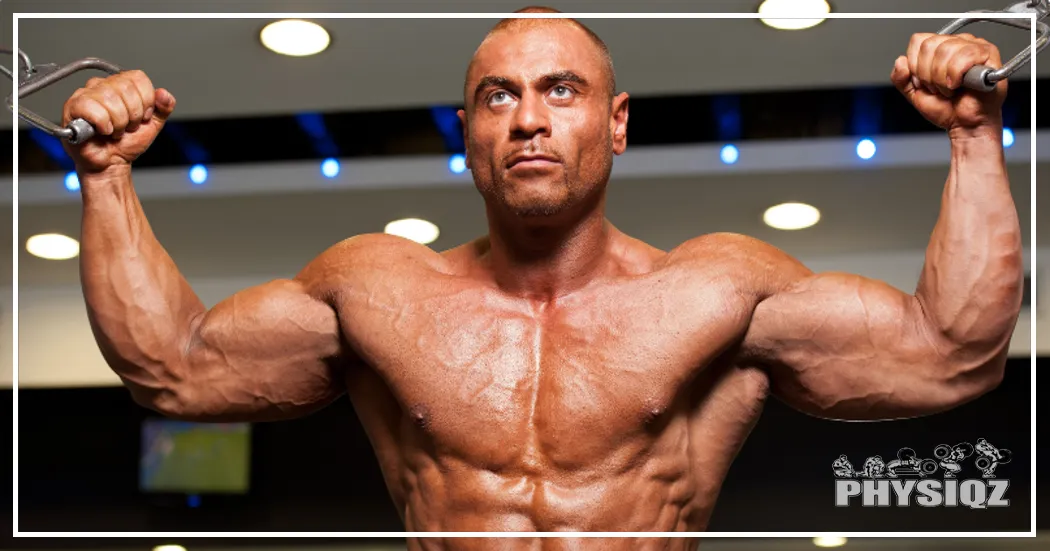
Poor chest genetics may entail pecs that are unresponsive or challenging to develop, or it could involve gaps or imbalanced lower to upper chest proportions.
Either way, it’s not necessarily bad chest genetics; you might just be making mistakes with these 11 things. Let’s start by examining instances of poor chest genetics among professional bodybuilders, explore the possibility of improving chest genetics, and then pinpoint precisely what you’re doing incorrectly to help you build mass in those underdeveloped pecs.
Is It Possible To Correct Bad Chest Genetics?
It depends. Poor chest genetics significantly influence the rate of muscle growth, their shape, and the potential muscle development achievable through training. It is a variable in training that lifters cannot separate themselves as they are born this way. Genetics is a study that focuses on genes, heredity, and genetic variation. Genetics influences everything about an individual, from personality to hair color, height, and even whether someone is prone to chest fat.
Since the genes dictate the very core of a human being, they will also dictate whether an individual can easily build a barrel chest, and nothing can be done to change the genes of a lifter. Poor chest genetics will dictate the <ahref=”https://www.ncbi.nlm.nih.gov/books/NBK525991/”>insertion points of muscles, the locations of attachment points, and the extent of muscle head separation.1 Genetics will even have a say on how the pectoralis major (chest muscles) blends with the front delts (front part of the shoulder) or how the muscle fibers cross at the sternum—the T-shaped bone in the middle of the chest that connects the ribs.
With all these factors, it is easy to see just how influential genes will affect the performance and gains that can be had. The good news is that bad muscle chest genetics can be fixed despite their influence on inhibiting muscle growth. Lifters with this shortfall would need to overcome their genetics by training harder and including techniques in their regimen to sufficiently activate their pecs and stimulate them to hypertrophy (muscle growth).
On the other hand, some individuals may have excellent chest genetics. Still, they are not training with enough volume or perhaps not training with the correct technique, which leads them to the notion that they have bad muscle chest genetics since they are not making significant gains. Hence, it’s wise to acknowledge that poor chest genetics play a role in the cause of subpar gains.
Signs of Bad Chest Genetics
Lifters can identify signs of bad chest genetics through various methods. These include gaps in the chest, the distribution of fast and slow twitch muscle fibers in the chest, and disproportions in muscles of the upper and lower chest and nipple (location, shape, and size).
Gaps in the Chest
Gaps in the chest are caused by insertion points deemed non-optimal for a good thick chest. This gap, known as the ‘pec gap’ is between the left and right pecs—the reason is that the insertion points into the sternum are not close to one another, which results in a gap that becomes more apparent, especially when the pecs are fully developed or when one is lean. It may also be caused by the bone structure where the rib cage causes this gap. The gap is an undesired trait that no amount of working out will cause this gap to be filled as there is simply no muscle in that area.
Clavicle Length
Shorter clavicles (shoulder blades) will mean that there isn’t just enough room for the muscles to be grown and developed. An individual with longer clavicles has enough space and room to work with to vastly expand their pec muscles as opposed to one with short ones. Lifters with bad shoulder genetics and chest genetics often have shorter and narrower clavicles.
Distribution of Fast & Slow Twitch Muscle Fibers
There are two kinds of muscle fibers—slow (type 1) and fast (type 2) twitch muscles that are found in the human skeletal tissue. Type 2 fibers are larger, contract at a faster rate, easily fatigued, and produce a greater force, whereas type 1 is smaller in size, don’t fatigue easily, and produces a smaller force. These muscles are further subdivided, but for this analysis, type 2 will be further divided into A and B—A being smaller in size, fatigued less, and producing a smaller force than B.
Type 2 fibers are activated with more ease and develop much more than their counterparts, which implies that a muscle with more of these fibers will be more likely to have hypertrophy. Depending on genetics, the chest muscles typically contain a mix of 60% of type 2A or 2B and the rest of type 1 fibers. Hence, having more muscle fibers than others due to poor chest genetics can hinder some lifters, while others with advantageous genetics may achieve significant gains with relatively less effort.
There are inconclusive studies that show with certain endurance and high volume workouts, there may be an intra-conversion of one type of fiber into another.2
Disproportions of Muscle Presence in Upper & Lower Chest
Lifters may have muscles in the upper and lower pecs that are not uniform. One part of the chest may have more muscle fibers than the rest—that is, the upper and lower part of the chest. Bad chest genetics can lead to an uneven chest development, with one part being more challenging to develop than the other, as either the upper or lower portion may be more developed than the other.
Nipple (Location, Size, & Shape)
Nipple location, size, and shape are indicative of whether an individual has poor chest genetics. The location of the nipple will make the chest muscles appear full or not. For example, when the nipples are located towards the upper portion of the chest, the pecs will appear larger than they actually are as opposed to an individual with the nipples placed lower.
Nipple size and shape serve as additional indicators of poor chest genetics. An undesirable trait would be to have large nipples shaped like a female. Another factor contributing to poor chest genetics is the abnormal growth of breast tissue in males, a condition referred to as gynecomastia.3
Genetic Conditions That Lead to Caving In or Out of the Chest
Severe genetic conditions can lead to poor chest genetics, with implications beyond mere aesthetics. These two conditions are outlined:
- Pectus excavatum—pectus excavatum is a condition where the middle of the portion (between the pecs) appears to have been scooped out due to the breastbone sinking into the chest cavity due to abnormal growth of cartilage which links the ribs to the sternum.4 This condition can cause heart problems or breathing issues.
- Pectus carinatum— the condition known as pectus carinatum manifests itself in the protrusion of the breastbone (sternum), giving it an appearance known as ‘pigeon breast’ or may also be known as ‘keel chest’.5 It is also due to abnormalities in the chest cartilage.
- Poland syndrome—individuals affected with Poland syndrome will have a part of the pectoralis major (chest muscle) missing, typically between the sternum and upper arm. This will usually give the chest a concave appearance.6
Instances of Bad Chest Genetics
On one end of the spectrum there’s individuals with good chest genetics that tend to have bodies with a natural V-taper look with wide shoulder blades, narrow waist, and muscular physiques and are typically strong individuals.
On the other hand, some individuals have a flimsy bone structure, narrow shoulder blades (clavicles), and tend to have flat chests. People with this characteristic often possess poor chest genetics and must exert additional effort to develop chest muscles.
Bodybuilding Champions With Poor Chest Genetics – Challenges in Bodybuilding
Many leading bodybuilders exhibit poor chest genetics, presenting significant challenges in the realm of bodybuilding. These extraordinary individuals have gone on to become household names despite the biology that is against them. These include Lee Haney, Rich Gaspari, Dorian Yates, and Chris Dickerson.
Dorian Yates— Dorian is among the most accomplished bodybuilders in history, despite facing challenges with his chest genetics. His chest was shallow, and his upper chest would seem to cave in compared to the rest of his chest.
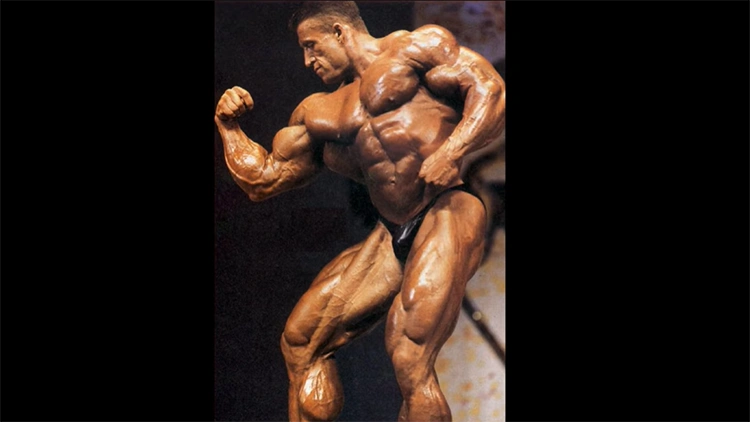
Despite his overall muscular chest, Yates’ upper chest appeared shallower and less developed compared to the rest of his chest, with a noticeable caving in. Source: Tomn8er on Youtube7
Rich Gaspari— Rich exhibits poor chest genetics, evident in the placement of his nipples; particularly, his right nipple appears suboptimally positioned and almost disconnected from his pectoral muscles. His lower left pec is not symmetrical with his right one as well. He went on to win the first Arnold Classic in 1989 and placed 2nd behind Mr. Olympia 3 years in a row (1986-1988).
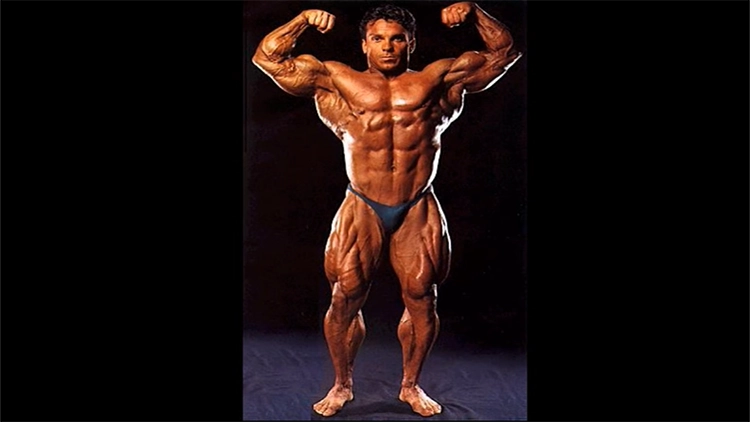
Rich’s chest genetics are visibly not optimal, as shown by his right nipple that appears detached from his pec muscles and the asymmetry between his lower left pec and right one. Source: Tomn8er on Youtube7
Chris Dickerson— Chris Dickerson boasts a well-developed lower body, yet his upper body is lacking in comparison, although his back is notably impressive. Despite his poor chest genetics, he compensated through diligent effort and maintained ideal proportions, with his calf muscles matching the size of his biceps and neck.

Observe the well-balanced muscle proportions as a counterbalance to Dickerson’s poor chest genetics. Source: Tomn8er on Youtube7
Lee Haney—Lee Haney is among the most successful bodybuilders of all time. His poor chest genetics were apparent in the insufficient muscle thickness of his lower pectorals. However, he became one of the greatest bodybuilders of all time.
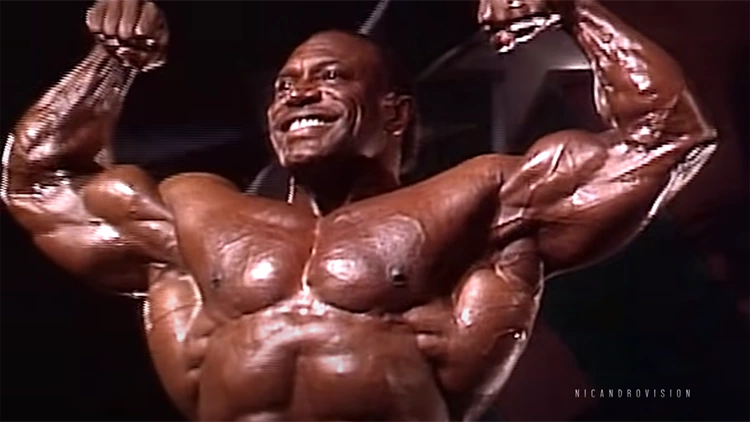
The absence of muscle thickness in Lee Haney’s lower pectorals is a distinct sign of his poor chest genetics. Source: NicandroVisionMotivation on Youtube8
Terry Crews—Terry Crews is not a professional bodybuilder but an actor. He does, however, have a physique fitting of a bodybuilder. He does have the classic bad genetics, as a gap can be seen between his pecs due to the insertion points being far apart.
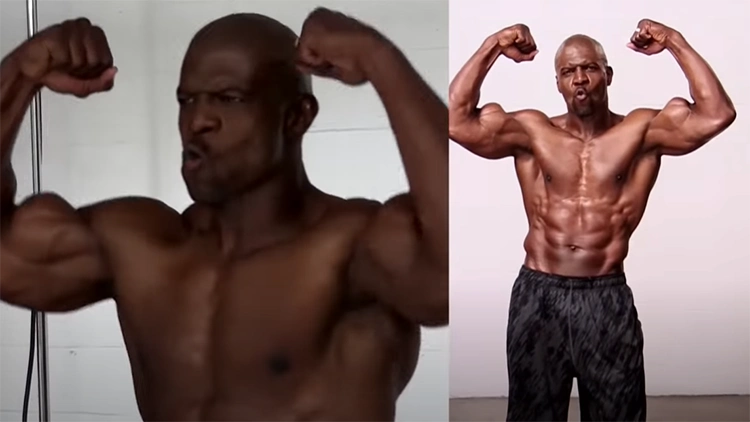
The noticeable gap between Terry Crews’ pecs serves as a clear indicator of poor chest genetics, with widely spaced insertion points posing challenges in achieving a fully developed chest. Source: Muscle and Fitness on Youtube9
Improving Bad Chest Genetics: Correcting These 11 Mistakes
Rather than lamenting the limitations imposed by poor chest genetics on their workouts and gains, lifters should recognize their errors in these 11 areas and rectify them. Individuals need to put the extra effort by increasing volume, cycling out exercises, and varying training techniques to ensure that they can overcome training plateaus and go against all odds and develop barrel chests.
#1 Increasing Training Volume
This is arguably the most important fault that lifters often face when it comes to working their chest muscles or any other muscle group which is not working the chest muscle enough. Training volume is the amount of work put into a muscle to activate it and stimulate it into hypertrophy— it is a product of the weight used per number of repetitions and the total number of sets and it is critical to ensure that the chest muscle receives adequate training volume to achieve hypertrophy.10
Individuals with poor chest genetics must exert greater effort, considering the odds are against them, to ensure they are adequately targeting the muscles with the necessary volume for growth.
#2 Increasing Training Frequency
Aside from volume, training frequency stands as an equally crucial factor to be mindful of for lifters, particularly those grappling with poor chest genetics; nonetheless, this principle also applies to individuals blessed with good chest genetics who can capitalize on their biological edge. Many times most lifters do not hit the chest muscle with the frequency it demands to achieve results. They often then resort to blaming it on genetics.
To ensure that the chest muscles receive adequate stimulation, they will need to be trained with a frequency of between 2 and 3 times a week to ensure muscle growth and development.11 Using methods like daily undulating periodization, which involves adjusting intensity and volume daily, can greatly improve hypertrophy. However, it is just as critical to ensuring adequate rest between the increased frequencies as the muscles will need to recover.
#3 Not Working All Heads of the Chest Muscle
This is a common problem with lifters who train their chest muscles for years without making substantial gains. Often, lifters prioritize the traditional bench press, mainly targeting the midsection of the chest muscles. They will tend to neglect the upper and lower chests or not work these sections of the chest the way they do for the mid-chest.
These lifters would then tend to have either underdeveloped upper or lower pecs or have both undeveloped resulting in a chest that is not developed sufficiently. Neglecting the upper chest is one of the worst decisions a lifter makes in pursuing a large chest.
#4 Using Correct Scapula Positioning
The scapula (shoulders) play a critical role in the chest presses as they provide stability for the movement and are one of the main movers along with pec muscles and the triceps. However, a common mistake that many lifters make is that they rotate their shoulders because improper form leads to several issues.
Rotating the shoulders means that the shoulders are being recruited more than they need to in the press, which also leads to a less stable bench press that results in less pec recruitment and drive to activate them properly. In addition, the shoulders are in a compromised position which opens up the door for injury.
Lifters will need to ensure that they have retracted shoulders (pinched back) during the entire movement of the press while driving the upper back into the bench, thus guaranteeing proper tension is maintained at all times. This will allow for a more powerful, efficient, and safer lift.
#5 Increasing Mind Muscle Connection
Poor chest genetics often put the pec muscles at a biomechanical disadvantage during the bench press or any other chest exercise, as these genetic factors render the muscles less efficient in executing the movement.
Mind muscle connection is a perceived sense of muscle contraction during resistance training. It is the conscious focus of a muscle during a contraction when lifting a weight—as a result, this can cause increased activation of the muscle.12
Isolation lifts tend to induce a more mind-muscle connection than compound movements since these movements involve more than one muscle—the bench press is a compound movement. Including isolation chest exercises such as cable flyes and crossovers will allow the lifter to sense or feel the contraction in the movement optimally. Soreness that sets in after a workout will confirm which muscles are handling the load.
#6 Inadequate Range of Motion (ROM)
Insufficient range of motion in chest exercises exacerbates the challenges posed by poor chest genetics. When an exercise is performed in a full range of motion (ROM), as in the case of the chest muscles, more fibers get recruited, and as a result, there is more activation which leads to hypertrophy and strengthening of the muscle.13
While the bench press is a foundational lift, it doesn’t allow for a full range of motion so be sure to incorporate dumbbell presses and flyes, in addition to other exercises that offer a fuller range of motion and peak concentric contraction.
#7 Addressing Mobility Issues
The mobility of joints is an important component of lifting weights and is often a big hindrance to developing chest muscles. Mobility issues in strength training result from tight or stiff muscles and joints which hinder the range of motion that lifters can put their muscles through, thus negatively affecting activating and stimulating the muscles to hypertrophy.14
Those with poor chest genetics are thus more susceptible to tight muscles and should prioritize thorough stretching both before and particularly after a chest workout. Including foam rolling and deep tissue massages will go a long way to loosening these muscles to allow them to work in an optimum ROM.
#8 Increasing Mass & Calorie Intake
Some apparent inadequacies are very apparent due to chest genetic factors that result in undesirable traits like chest gaps. These become very pronounced with lean individuals who have increased muscle mass and appear ripped.
One solution would be to increase the number of calories consumed, in essence bulking up and increasing the overall body fat percentage. This will help fill out the areas with gaps because no muscle can ever fill these gaps due to insertion points that are far out; as a consequence, the chest will have a more complete and smoother look. This should, however, be done in moderation to prevent someone from getting overweight and ruining the physique that they have worked for.
#9 Too Much Focus on Positive Training
Lifters may tend to exercise the negatives or eccentric (this is the portion of a lift where the muscles are lengthened under load) relatively quickly. To put this into perspective, when the bar is lowered as in a bench press—this should be performed in a slow and controlled manner—then pressed up more explosively.
The eccentric causes a majority of the damage to the muscles which leads them to repair and regrow much stronger.15 Therefore, if lifters focus on slowing the eccentric, they can develop and grow their muscles better.
#10 Cycling Out Exercises
Lifters often stay stuck in exercises they are familiar with until they eventually reach training plateaus as they get comfortable with a certain set of workouts. This also causes joint injury and fatigue since they are being worked unilaterally without variation. Alternatively, some lifters switch exercises too often, not giving the body enough time to respond to the movements.
Workout routines should be balanced between compound movements such as presses and isolation exercises like flyes. Regimens should be maintained for about 2-4 weeks before switching them, giving the muscles enough time to respond while at the same time they don’t plateau with the same set of exercises being repeated.
Including cable cross-overs is beneficial for individuals with poor chest genetics. As mentioned before, lifters with bad chest muscle genetics may be inefficient at bench pressing due to inadequate leverage as they may have flat rib cages. This is where cable crossovers come in—they allow these individuals to target the pecs effectively and bypass this issue.
#11 Taking Time Off Training
Some individuals tend to over-train, especially once they have hit training plateaus in which they are no longer making any substantial gains to their chest workouts. Moreover, trainers should incorporate this approach to address poor chest genetics by taking periodic breaks from training to allow the body to reset and return rejuvenated for a fresh workout routine.
Bad chest genetics are beyond the lifter’s control and can pose challenges in developing a massive chest; identifying and rectifying these 11 mistakes will empower them to overcome these obstacles..
References
1Medicine, N. L. (2021, July 26). Anatomy, Thorax, Pectoralis Major Majo. Retrieved 2022, from <https://pubmed.ncbi.nlm.nih.gov/21912291/>
2Medicine, N. L. (2012, June 26). The effects of endurance, strength, and power training on muscle fiber type shifting. Retrieved 2022, from <https://doi.org/10.1080/110241501753361550>
3Surgery, E. J. (2002, December 12). Gynaecomastia. Retrieved 2022, from <https://www.chop.edu/conditions-diseases/pectus-excavatum>
4Philadelphia, C. H. (2022). Pectus Excavatum. Retrieved 2022, from <https://www.ncbi.nlm.nih.gov/books/NBK541121/>
5Medicine, N. L. (2022, May 3). Pectus Carinatum. Retrieved 2022, from <https://medlineplus.gov/genetics/condition/poland-syndrome/>
6Plus, M. (2022). Poland syndrome. Retrieved 2022, from <https://www.unm.edu/~lkravitz/Article%20folder/VolumeHypertrophy.html>
7Top Bodybuilders Who Overcame “Bad” Genetics.” YouTube, 5 August 2017. Accessed 30 March 2023. <https://www.youtube.com/watch?v=BynHphf0BCo>
8Lee Haney – THE 8X MR OLYMPIA.” YouTube, 26 August 2018. Accessed 30 March 2023. <https://www.youtube.com/watch?v=xLJyjHV1dbY>
9Behind The Scenes: Terry Crews is More Ripped Than Ever at 49.” YouTube, 30 July 2017. Accessed 30 March 2023. <https://www.youtube.com/watch?v=ZDgGriH6Vx4>
10Zachary Mang, M. J. (2019). Resistance Training Volume is the Key to Muscle Size. Retrieved 2022, from <https://www.unm.edu/~lkravitz/Article%20folder/frequency.html>
11Zachary Mang, M. a. (2018). Resistance Training for Muscle Size: How Many Days Per Week is Best? . Retrieved 2022, from <https://pubmed.ncbi.nlm.nih.gov/26700744/>
12Medicine, N. L. (2016, March). Importance of mind-muscle connection during progressive resistance training. Retrieved 2022, from <https://www.ncbi.nlm.nih.gov/: https://www.ncbi.nlm.nih.gov/pmc/articles/PMC6977096/>
13Medicine, N. L. (2020, January 21). Effects of range of motion on muscle development during resistance training interventions: A systematic review. Retrieved 2022, from <https://www.ncbi.nlm.nih.gov/pmc/articles/PMC8067745/>
14Medicine, N. L. (2021, April 7). Strength Training versus Stretching for Improving Range of Motion: A Systematic Review and Meta-Analysis. Retrieved 2022, from <https://pubmed.ncbi.nlm.nih.gov/: https://pubmed.ncbi.nlm.nih.gov/18981046/>
15Medicine, N. L. (2009, August). The effects of eccentric versus concentric resistance training on muscle strength and mass in healthy adults: a systematic review with meta-analysis. Retrieved 2022, from <https://pubmed.ncbi.nlm.nih.gov>